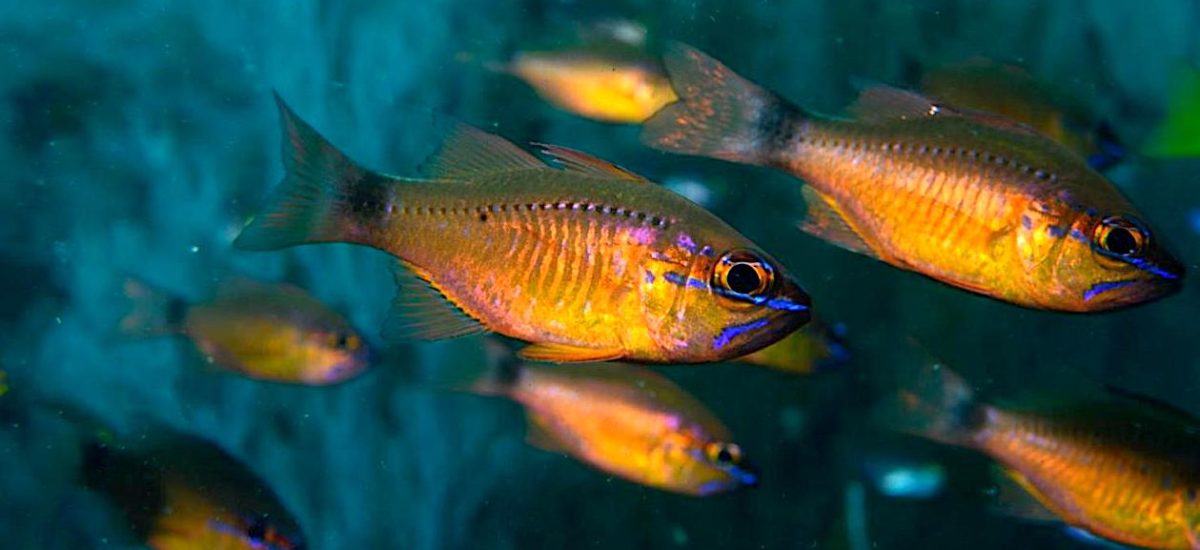Photos courtesy Curado Art Space
Today is World Oceans Day
To celebrate World Oceans Day passionate ocean lovers, photographers, artists and activists gathered at the Curado Art Space in Colombo. The exhibition Beneath the Blue is a collaboration between Parley Sri Lanka and All About That Reef, inviting viewers to step beneath the surface both literally and metaphorically. Through the lens of underwater photographers, it showcases the vivid colours, rich biodiversity and quiet majesty of the ocean.
The exhibition showcases the work of three remarkable photographers: Nick Hobgood, Manjula Wijeyaratne and Edoardo Spacca, each bringing a unique perspective to the underwater world.
Nick Hobgood is an oceanographer, underwater photographer and humanitarian with over 30 years of global experience. A diver since 1981 and photographer since 2003, Nick has documented the marine life of Timor-Leste, Indonesia, Fiji, the Maldives, Sri Lanka and beyond. His striking imagery is not only a celebration of oceanic beauty but also a compelling call to action for marine conservation. Manjula Wijeyaratne, a Sri Lankan architect and passionate diver with more than 450 dives to his name, uses photography as a powerful medium for environmental advocacy. As a former president of the Sri Lanka Sub Aqua Club, he was instrumental in the national ban on spearfishing and continues to campaign against harmful coastal developments. Edoardo Spacca, an Italian photographer and seasoned diver, has explored underwater ecosystems in over a dozen countries including Thailand, Malaysia, the Philippines, Timor-Leste, Palau, South Africa, Egypt, Sudan and Mexico. Now based in Sri Lanka and the Maldives, Edoardo focuses especially on sharks, marine mammals and conservation. His work has been featured in both Italian and British underwater photography publications.
Edoardo Spacca opened the evening with a moving reflection. “I’m an Italian national who fell in love with the sea more than 25 years ago,” he said. “It was love at first sight. Once I found the underwater world, it was like biting the poison apple – there was no going back.” His journey began with recreational diving but quickly turned into an obsession. “The first big mistake,” he joked, “was buying a small digital camera. That camera grew and eventually became like my child.” Today, Eduardo uses photography as a form of advocacy; a way to tell stories from beneath the waves, stories that are often overlooked or ignored. Many of his images capture the paradox of the ocean: its splendour and its suffering. “You’ll see sharks, turtles, corals,” he explained, “but look closer and you’ll also see hooks, nets, plastic. These are just a fraction of the human impact on marine life.”
Nick Hobgood first discovered the magic of coral reefs as a high school student in Haiti. “The colours, the biodiversity, it was like entering a fantasy world,” he recalled. His love for reefs followed him to Southeast Asia where he was posted in the Coral Triangle, a marine region that boasts the planet’s highest biodiversity.
“I picked up a camera because I wanted my two year old daughter to see what I was seeing,” he said. Over time, his work also became a way to document loss. The vibrant colours of coral reefs are often due to a symbiotic algae living within the corals. With rising sea temperatures, these algae die off, causing coral bleaching. “Just recently a marine heatwave affected an estimated 83% of corals globally,” he said. “Ten years ago that number was 70%. We’re witnessing an accelerating crisis.”
Aindri Morahela, a long-time diver and founder of All About That Reef, highlighted the challenges of underwater photography. “The ocean is never still,” she said. “There are currents, low visibility and the constant question do I protect myself or my camera?”
Taking high quality photographs underwater is no easy feat. It requires not only technical skill and expensive gear but also patience, timing and the ability to adapt to unpredictable environments. “These images,” noted the organisers, “are not just photos, they’re the result of commitment, courage and countless hours beneath the surface.”
Morahela reminded the audience of the exhibition’s dual purpose. “This is not just about pretty pictures,” she said. “It’s about raising awareness. It’s about action. Each image carries a message,” she added. The audience is invited to view these photos with a deeper lens and to feel the urgency behind the beauty.
Eduardo said, “Life comes from the oceans. We come from the oceans.” The ocean is not just a body of water, it is the source of all life on earth. It regulates our climate, absorbs carbon dioxide and produces over half of the oxygen we breathe.
Yet the oceans are under siege. Plastic pollution, overfishing, oil spills, rising sea temperatures, acidification and coastal development are pushing marine ecosystems to the brink. Those most vulnerable – coral reefs, small island communities and marine species – are all disappearing before our eyes.
The organisers encouraged everyone to reflect on their relationship with the ocean. From the coral triangle to the shores of Sri Lanka, from the Caribbean to the Indian Ocean, the stories of the sea are our stories too.
Workshops and community events will be held in the days following the exhibition with the goal of educating the public on ocean conservation, marine biodiversity and the actions individuals can take to protect the blue planet.
Beneath The Blue is at Curado Art Space until June 9.

